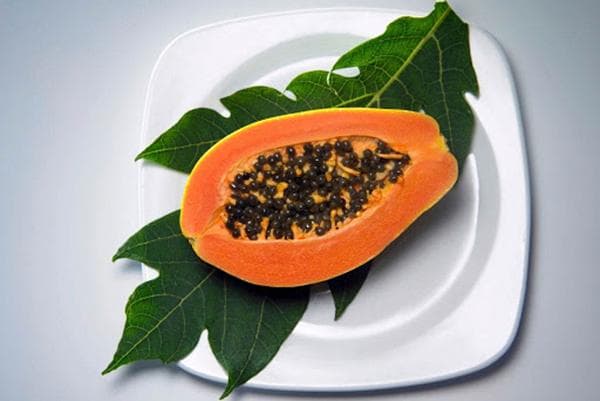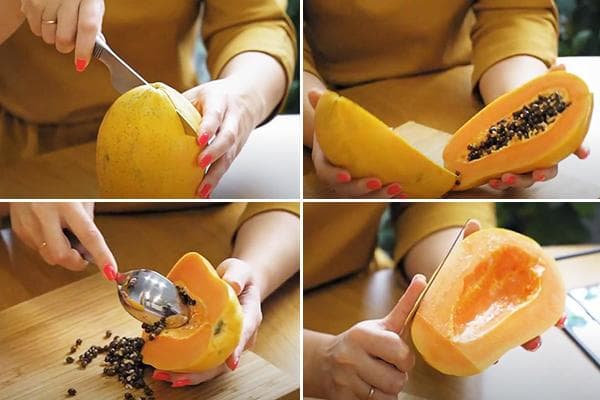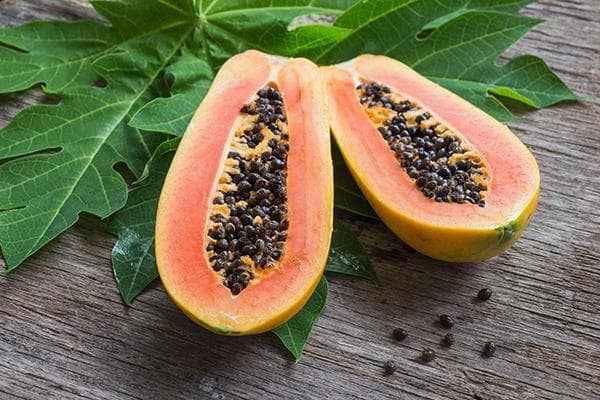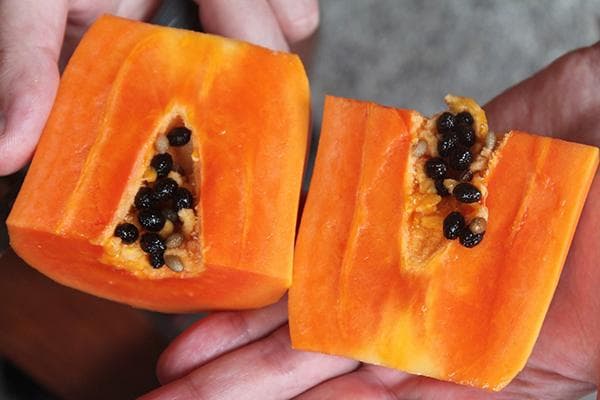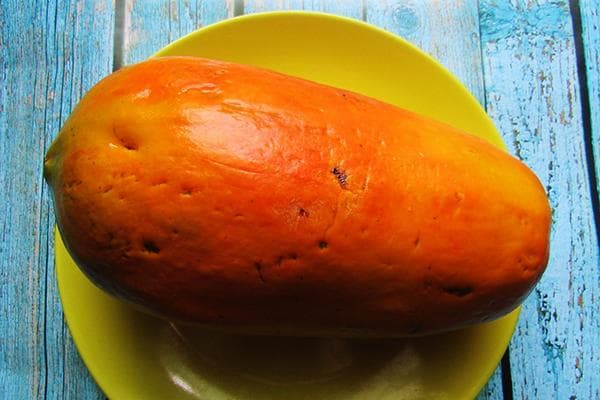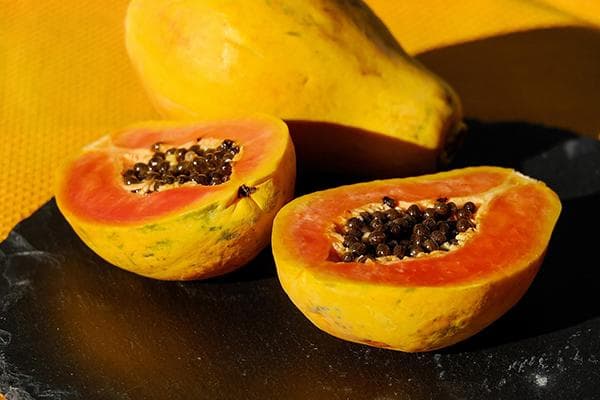How do you eat papaya and why is it so healthy?
Content:
In tropical countries, papaya is eaten every day. But for most Russians this fruit is new. Looking ahead, papaya can be compared to melon: just as sweet, just as clean. They are also very similar in chemical composition and nutritional value.
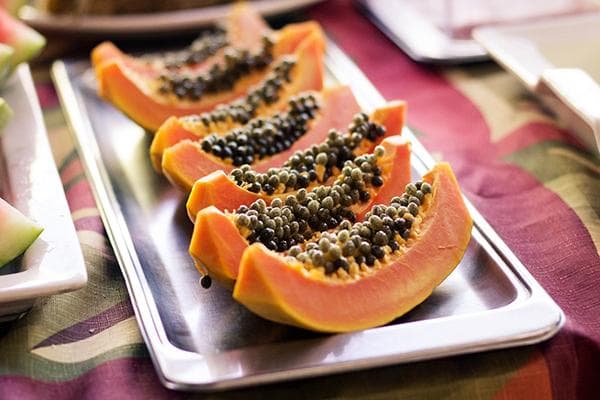
What does papaya taste like?
This is the first question that worries people who are going to try it. It must be said that the taste of papaya is not for everyone. 50% of people are delighted with it, and for the other 50% it causes misunderstanding and disgust.
They say that in order to taste papaya, you need to have developed taste buds. This is the only way to catch in her taste those very delicious notes that defy description.
What does the fruit taste like and what is it most like:
- melon;
- pumpkin;
- carrot;
- apricot;
- zucchini
The smell of papaya is herbaceous, rather vegetable and unattractive. At the same time, the ripe fruit tastes sweet. The consistency of the pulp is most reminiscent of melon.
There are over 1,000 varieties of papaya, and each has a unique flavor profile. The Holland and Hawaiian varieties are considered the most delicious. The first one has clearly audible chocolate and coffee notes. And Hawaiian papaya tastes identical to the chewing gum from childhood.
How do you eat papaya?
Most often, the fruit is eaten raw.To emphasize the taste of the pulp, it is poured with passion fruit or lime juice. But you can skip this point.
How they eat papaya in their homeland:
- Fresh. Papaya is a frequent guest on the natives' table. The fruit is eaten the same way as a melon in Russia: peeled, cut and put in the mouth.
- Baked. In this form, the fruit begins to emit a strong aroma of freshly baked bread. It is baked in halves, stuffed with vegetables, seafood and meat.
- Dried. The pulp is cut into sticks and dried. Dried papaya retains all its beneficial properties, its taste becomes sweeter and richer. Dried fruits are used to prepare porridge, stew meat, add to ice cream and other desserts, and eat as a snack.
- In dishes. The fruits are used to prepare salads, soups, stew meat and vegetables, make desserts, cocktails, smoothies, and bake pies. They go well with carrots, tomatoes, chicken, avocados, citrus fruits, passion fruit, fish and seafood.
To prepare savory dishes, green, slightly unripe fruit is mainly used.
How to peel papaya?
Peel an exotic fruit in the same way as a pumpkin or melon.
- You need to cut the fruit lengthwise into two halves.
- Scoop out the seeds with a spoon.
- Cut off the peel.
- Cut the pulp into half rings or cubes.
If the fruit is small, peeling the skin is not necessary. This papaya is usually eaten by scooping out the pulp with a spoon.
The benefits and harms of papaya
Papaya is the fruit of a melon tree that resembles a palm tree in appearance. It grows everywhere in the tropics: in Thailand, the Philippines, southern Mexico and America, etc. The fruit is notable for containing the unique substance papain. It is used in medicine, cooking and cosmetology.
Papain is used to cleanse wounds, exfoliate skin, slow down body hair growth, and treat intervertebral osteochondrosis.It is included in toothpastes to better dissolve plaque. It promotes food digestion and is recommended for people who overeat.
The benefits of papaya for the body are due to the content of a large number of amino acids, dietary fiber, vitamins and minerals. Ripe pulp contains a lot of vitamin C (more than lemons). It also contains vitamins A, B5, B9, E, magnesium, potassium, copper, omega-3 and omega-6 fatty acids. With all this, the fruit is low-calorie. 100 g of pulp contains about 40 kcal.
What are the benefits of papaya:
- helps to quickly digest food;
- cleanses the intestines and the body as a whole;
- reduces the risk of stroke, cardiovascular diseases and cancer;
- slows down the aging of the retina, good for vision;
- promotes weight loss by quickly burning fat;
- strengthens the immune system;
- has an anti-inflammatory and wound-healing effect;
- has antihelminthic properties.
In ancient times, women used the melon tree as a contraceptive and abortifacient. The leaves and roots of the plant have these properties.
If you anoint an insect bite with a piece of fruit, the pain will subside very quickly.
Possible harm and contraindications
Ripe papaya does not contain toxic substances, so it cannot be called harmful. Thais give fruit to children as their first food. However, the body of Russians may not absorb the exotic fruit so well. Possible negative effects and harm:
- allergy;
- diarrhea;
- nausea and heartburn.
There are no contraindications to consuming the fruit as such. It is only recommended to limit its use during periods of indigestion, severe diseases of the pancreas, gastritis, and ulcers.
It is not recommended to eat unripe fruits without heat treatment. They contain toxic substances that can cause poisoning.
How to eat papaya correctly?
Many people are wary of papaya and wonder how to eat it correctly. In fact, there are no clear recommendations on this matter. There is no specific daily requirement. Residents of tropical countries can eat up to 2 fruits per day, sometimes more. For those who are trying the fruit for the first time, it is better to start with a small slice. To avoid adverse reactions, it is better to eat papaya:
- Immediately before or after eating the main meal. This way it will be as useful as possible: it will improve digestion and ensure the delivery of substances valuable to the body.
- Chilled. Keep the fruit in the refrigerator for some time. They say this makes it taste better.
- Thin slices. Small and thin pieces of papaya have a more subtle taste and allow you to taste it better.
If you don't like the taste of the fruit, try making a smoothie. Recipe:
- Mix 200 g papaya pulp, 150 g sweet banana, 100 ml yogurt, 100 ml milk, a pinch of vanilla sugar.
- Puree with a blender.
- Add 4 ice cubes.
- Divide into two portions and garnish with mint leaves.
The taste of the drink will not leave anyone indifferent. Plus it is very good for health!
How to choose a delicious papaya?
The exotic fruit ends up on supermarket shelves mostly in an unripe form and is very different from a juicy papaya just picked from the tree. But still, choosing a tasty specimen will not be difficult if you know some of the features of ripening.
Do a little test:
- Pay attention to the brightness of the color. The riper the papaya, the brighter it is.
- Press down on the stem.It should not be soft, but when pressed, a characteristic aroma should appear.
- Feel the fruit. It should be moderately elastic, not hard, but not too soft.
- Inspect for damage. Some wrinkling of the skin, the presence of dark scratches and “birthmarks” are allowed. You should not buy papaya with extensive and deep darkening, cracks and dents.
- When cut, a ripe papaya should be orange-red, with hard black seeds.
If you receive an unripe fruit, leave it in the fruit bowl next to the bananas and apples. After a day or two, the papaya will ripen and become full of sweetness. And if the fruit has already been cut, sprinkle the pulp with lemon juice and honey and refrigerate for 3-4 hours.
Storage Features
Papaya has a short shelf life. It is advisable to eat it in the first days after purchase. The optimal storage place is a refrigerator or a dark, cool place with a temperature of +7 degrees.
Whole fruit can be stored for no longer than a week, and cut fruit can be stored for 2–4 days (under cling film).
In countries where papaya grows, it is treated very casually.It is eaten fresh, like our melon, dried, and various dishes are prepared, including savory ones. Russians don’t always like overseas fruit. Some immediately fall in love with her, others simply cannot stand her. How do you like its taste? Did you like it?
